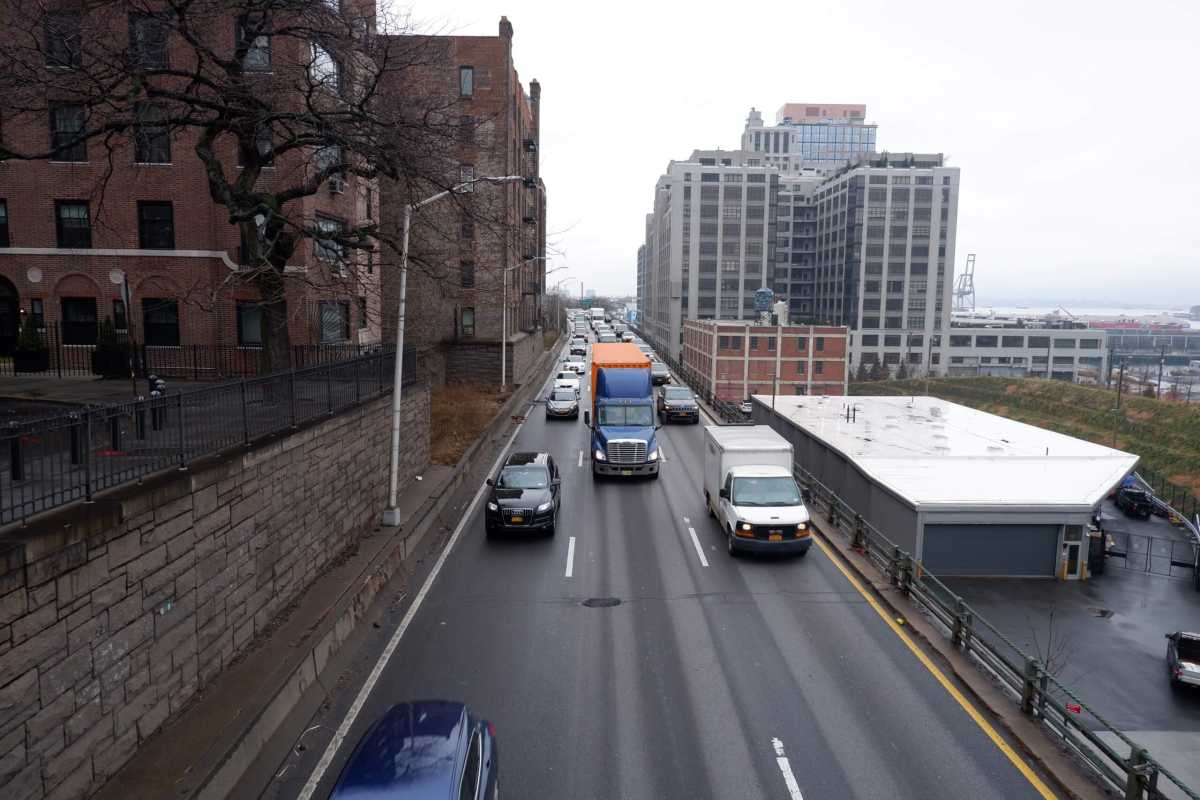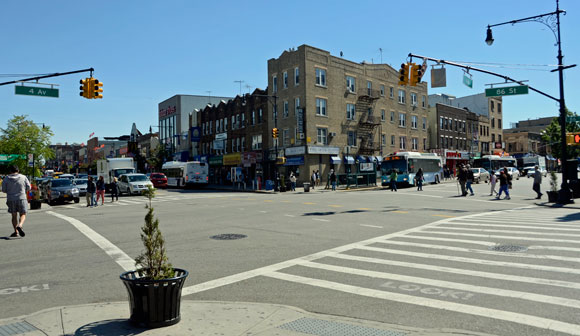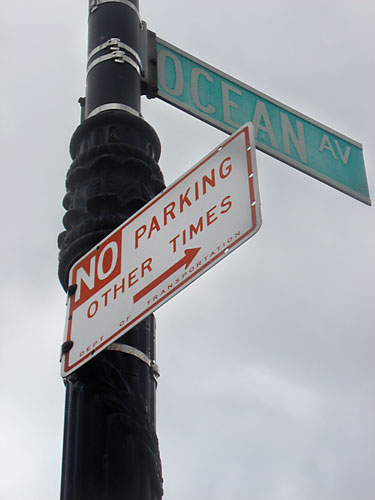They’re looking to tip the scales in their favor!
The city wants to install automatic weight monitors along the Brooklyn-Queens Expressway to help highway patrol catch truckers hauling overweight loads down the aging interstate, most of whom get away with their outlaw behavior due to the cops’ low-tech surveillance equipment — their eyeballs, according to the city’s chief highway cop.
“We are touching just the tip of it,” said Inspector Steven D’Ulisse, commanding officer of the NYPD Highway District at a City Hall hearing about the BQE.
Police have issued 97 weight-related summonses for trucks and have taken 23 of those vehicles out of service along the BQE since Mayor Bill de Blasio issued an executive order for the Boys in Blue to up enforcement of the heavy rigs along the roadway on Feb. 3.
But officers are forced to rely largely on their intuition to pick out offenders — essentially pulling over drivers they suspect may be overweight, and then measuring their loads using mobile scales — and officials at the Department of Transportation want to partner with their state counterparts to install automatic sensors along the aging roadway, which would help capture offenders who slip past highway patrol, according to officials.
The new sensors — known as weigh-in-motion or WIM — are capable of automatically detecting an overweight load, while also capturing license plates and US Department of Transportation registration numbers, which are fed in near real-time to police, much like speed and red light cameras, according to D’Ulisse.
“That’s key to get every single truck that’s overweight automatically, almost like a red light summons or a speed camera summons,” he said.
De Blasio’s directive to increase truck enforcement followed the release of a report by an expert panel he convened to study the roadway, which found that the crumbling triple cantilever section between Atlantic Avenue and Sands Street could become unsafe to travel on within the next five years.
The panel also recommended reducing the highway’s lanes from three in each direction to two, but de Blasio has so far been skeptical of that proposal.
The panel found that out of the 15,000 trucks that traverse freeway every day, a small fraction of overweight freight carriers were causing disproportionate damage to the structure.
Trucks are limited to a maximum of 80,000 pounds, or 40 tons, along the BQE, but some sensors the panel used while studying the roadway found that some trucks were loading as much as 170,000 pounds!
Trucks can also violate the law if they carry less than 80,000 pounds on smaller vehicle, which results in more pressure being applied to the road surface, D’Ulisse noted.
The city agency installed the first such WIM technology on the Alexander Hamilton Bridge between the Bronx and Manhattan in 2014, and two more in Queens in 2016, according to US Department of Transportation documents, but the city’s DOT Commissioner Polly Trottenberg is eager to implement them on the BQE and beyond.
“[The Police Department] is not going to be every place all the time and increasingly we’re going to be want to get trucks with automated enforcement that will operate in key parts of the city 24/7,” Trottenberg said at the hearing. “It’s not widely deployed around the world yet, but I think it is in place where New York is likely to want to be a leader.”
Before the officials can start installing the sensors, the city will need approval from the state’s Department of Transportation, whose spokesperson did not immediately respond to a request for comment.
























